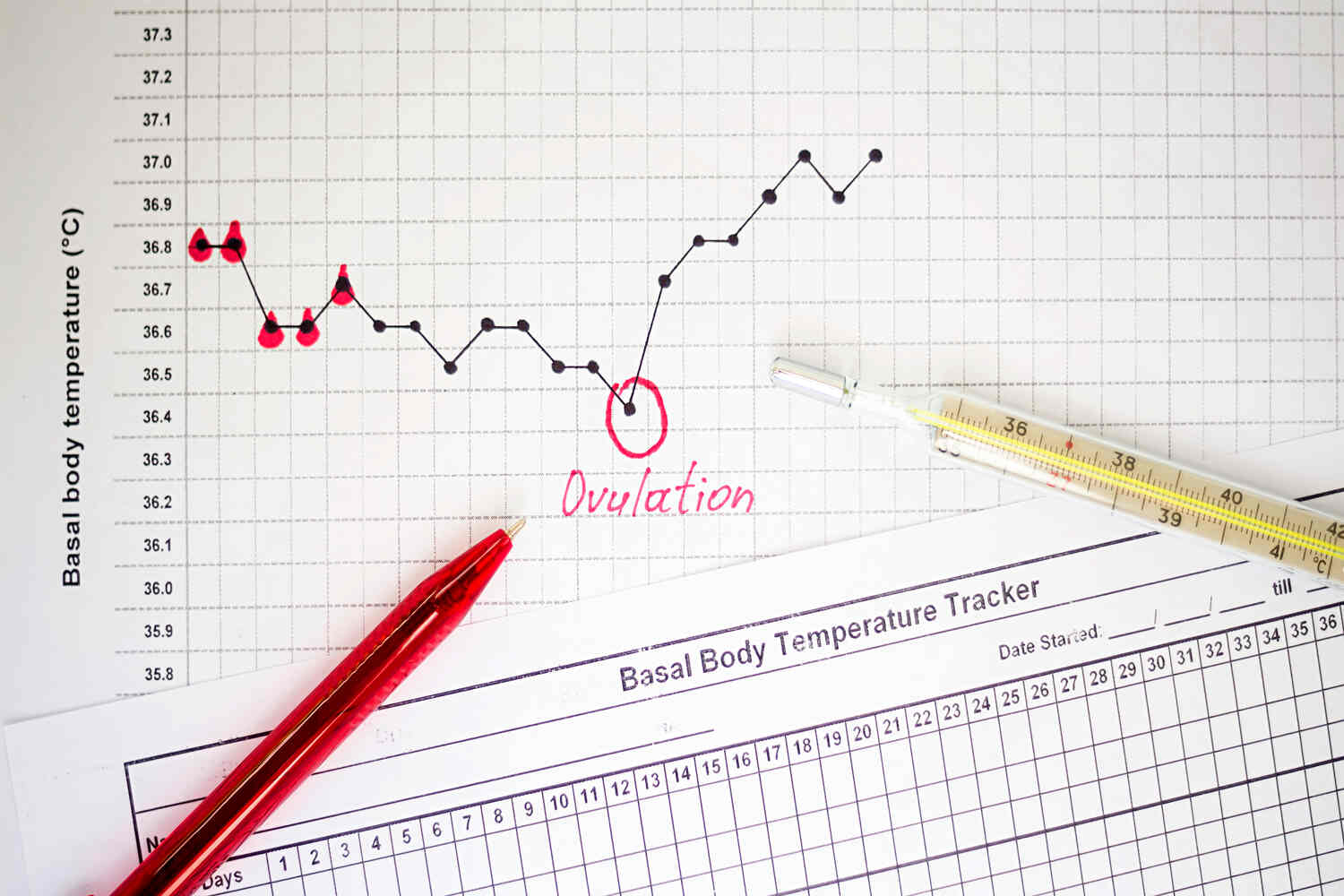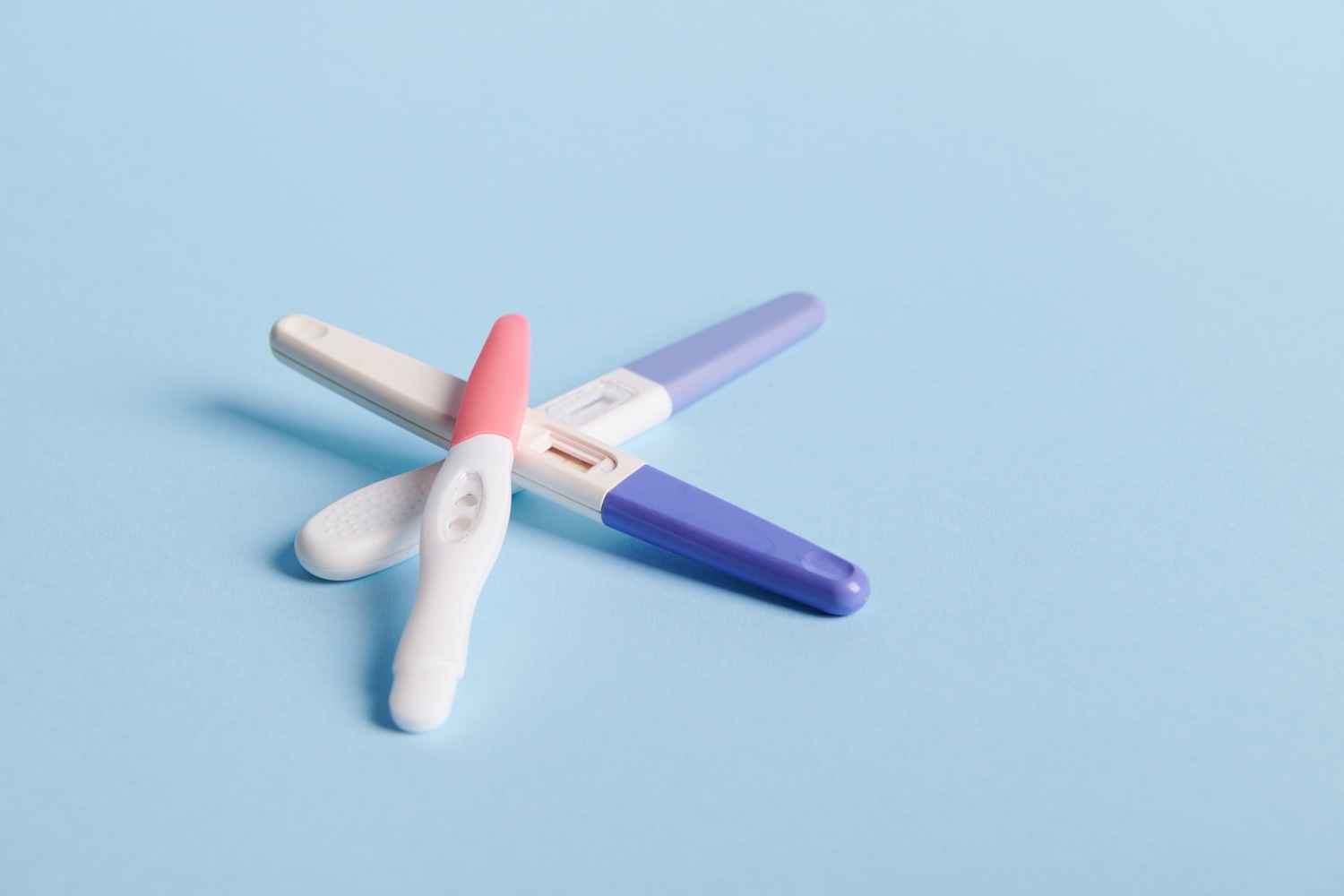
Ovulation is the process of release of egg or ovum from the uterus, ready to be fertilized by sperm. This phase occurs mid-cycle – around the 14th day of a 28 day cycle. So what are the indications the ovulation has occurred?
The process of ovulation is marked by certain symptoms such as ovulation pain and basal temperature changes. Couples who are planning a family or want to avoid conception must track their ovulation and plan accordingly.
In This Article
- How do I know if Ovulation Has Occurred?
- How Long Does The Ovulation Window Last?
- Can I Rely on Ovulation Predictor Kits (OPKs) to Confirm Ovulation?
- How Can I Optimize Fertility During The Ovulation Window?
- Choosing The Right Fertility Treatments
- FAQ’s
How do I know if Ovulation Has Occurred?

Determining whether ovulation has occurred involves paying attention to various signs and symptoms. Here are some common methods for tracking ovulation.
1. Basal Body Temperature (BBT) Charting
Ovulation often results in a slight increase in basal body temperature. Regularly measure your waking temperature every morning before getting out of bed and chart the readings. An extended increase in body temperature usually signifies the completion of ovulation (1).
2. Cervical Mucus Changes
Monitor changes in cervical mucus throughout your menstrual cycle. Around ovulation, cervical mucus tends to become clearer, more slippery, and stretchy, resembling the consistency of raw egg whites (2).
3. Ovulation Predictor Kits (OPKs)
OPKs detect the surge in luteinizing hormone (LH) that precedes ovulation. A positive result on an OPK indicates that ovulation is likely to occur within the next 24-48 hours (3).
4. Mittelschmerz (Ovulation Pain)
Some women experience mild pelvic pain or discomfort during ovulation, known as mittelschmerz. This pain is typically felt on one side of the abdomen and can be an additional clue that ovulation is occurring (4).
5. Tracking Menstrual Cycle Regularity
For women with regular menstrual cycles, ovulation usually occurs approximately 14 days before the start of the next menstrual period. Tracking your cycle length can provide an estimate of when ovulation is likely to take place.
6. Cervical Changes
The cervix undergoes changes during the menstrual cycle. Around ovulation, the cervix may become softer, higher, and more open. Some women may notice these changes through self-examination (5).
7. Fertility Monitoring Apps
Use fertility tracking apps that allow you to input data about your menstrual cycle, symptoms, and other fertility indicators. These apps may provide predictions about fertile windows based on the information you provide.
8. Progesterone Blood Test
A blood test measuring progesterone levels can help confirm ovulation. Higher levels of progesterone in the second half of the menstrual cycle indicate that ovulation has occurred (6).
How Long Does The Ovulation Window Last?

The ovulation window, also known as the fertile window, is the timeframe during which conception is most likely to occur. It includes the days leading up to and following ovulation. The length of the ovulation window can vary from woman to woman and can be influenced by factors such as cycle regularity and sperm survival.
Here are some general guidelines
a. Ovulation Timing
Usually, the ovulation takes place in the middle of the menstrual cycle. For a woman with a regular 28-day cycle, ovulation may occur around day 14. However, this can vary, and tracking methods like basal body temperature (BBT), ovulation predictor kits (OPKs), or monitoring cervical mucus can help pinpoint ovulation.
b. Sperm Survival
Up to five days are allowed for sperm to survive in the female reproductive system. This means that the fertile window extends a few days before ovulation. Having sex in the days before ovulation increases the likelihood that sperm will be present when the egg is released.
c. Egg Viability
The egg released during ovulation is viable for about 12 to 24 hours. Therefore, the fertile window also includes the day of ovulation and possibly the day after. Conception is most likely to occur if intercourse takes place within this timeframe.
d. Total Fertile Window
In summary, the fertile window can last approximately 5-7 days. This includes the days leading up to ovulation, the day of ovulation, and possibly the day after. The highest likelihood of conception is often within the 2-3 days before ovulation.
Can I Rely on Ovulation Predictor Kits (OPKs) to Confirm Ovulation?

Ovulation Predictor Kits (OPKs) are valuable tools for predicting and detecting the surge in luteinizing hormone (LH) that precedes ovulation. While OPKs are generally reliable, it’s essential to understand their limitations and use them as part of a comprehensive approach to confirm ovulation.
Here are some considerations
1. Detection of LH Surge
OPKs work by detecting the surge in LH levels (7), which occurs approximately 24-48 hours before ovulation. A positive OPK result suggests that ovulation is likely to happen soon.
2. Timing Accuracy
OPKs provide information about the LH surge, but they do not confirm the actual release of an egg (ovulation). It’s possible to have a positive OPK and not ovulate, or vice versa.
3. Individual Variability
Women’s LH surge patterns can vary. Some may have a short, intense surge, while others may experience a more gradual rise. Monitoring for multiple cycles can help understand individual patterns.
4. Additional Ovulation Signs
Combining OPKs with other methods, such as tracking basal body temperature (BBT) or monitoring cervical mucus changes, can provide a more comprehensive view of the ovulation process.
5. Long Surge Duration
Some women may have an extended LH surge, leading to multiple days of positive OPK results. The peak of the surge, however, typically occurs within a shorter time frame.
6. False Positives or Negatives
Factors such as certain medications, medical conditions, or diluted urine can impact the accuracy of OPK results, leading to false positives or negatives.
7. Regular Testing
Regular testing, especially as the expected ovulation window approaches, increases the likelihood of capturing the LH surge. Daily testing around the expected time of ovulation can provide more accurate results.
8. Understanding The Menstrual Cycle
Using OPKs in conjunction with an understanding of the menstrual cycle, including cycle length and regularity, enhances the effectiveness of ovulation prediction.
How Can I Optimize Fertility During The Ovulation Window?
Optimizing fertility during the ovulation window involves strategic planning and practices to increase the chances of conception. Here are some tips:
a. Track Ovulation Closely
Use reliable methods to track ovulation, such as ovulation predictor kits (OPKs), basal body temperature (BBT) charting, and monitoring cervical mucus changes. This helps pinpoint the most fertile days within the ovulation window.
b. Regular Intercourse
Engage in regular intercourse during the days leading up to and around the time of ovulation. Having intercourse every 1-2 days during the fertile window increases the likelihood of sperm being present when the egg is released.
c. Timing Matters
Aim to have intercourse a day or two before ovulation to increase the chances of sperm being available when the egg is released. Up to five days are allowed for sperm to survive in the female reproductive system.
d. Avoid Tobacco And Excessive Alcohol
Both tobacco and excessive alcohol consumption have been linked to reduced fertility. It’s advisable to limit or avoid these substances during the conception process.
e. Reduce Stress
High stress levels can impact fertility. Practice stress-reducing activities such as mindfulness, meditation, yoga, or deep breathing exercises.
f. Limit Caffeine Intake
While moderate caffeine consumption is generally considered safe, excessive caffeine intake may affect fertility. Consider limiting caffeine intake, especially during the ovulation window.
g. Stay Hydrated
Maintain proper hydration. Drinking enough water is essential for overall health, including reproductive health (8).
h. Preconception Vitamins
Consider taking prenatal vitamins or supplements (9) with folic acid (9A), which is important for early fetal development. Start these supplements before conception.
i. Pelvic Health
Support optimal pelvic health. Avoid using lubricants that may be harmful to sperm, and consider staying in a reclined position for 10-15 minutes after intercourse to enhance sperm transport.
j. Professional Advice
Consult with healthcare professionals or fertility specialists for personalized advice based on your specific health and fertility history.
k. Regular Check-ups
Make an appointment for routine examinations with your physician to address any underlying health conditions that might impact your ability to conceive.
Choosing The Right Fertility Treatments

Navigating the journey towards parenthood involves a careful consideration of various factors, including the choice between Intrauterine Insemination (IUI) and In Vitro Fertilization (IVF), understanding the signs of ovulation, and optimizing fertility during the ovulation window. Couples facing fertility challenges should approach these decisions with both medical guidance and emotional preparedness.
Choosing between IUI and IVF requires an understanding of the specific fertility issues involved, individual preferences, and the recommendations of fertility specialists. Each method has its merits and is tailored to address different levels of fertility complexity. As part of the decision-making process, couples may consider factors such as success rates, invasiveness, and financial implications.
Recognizing the signs of ovulation and understanding the signs that ovulation ended are crucial for couples actively trying to conceive. Methods like tracking basal body temperature, monitoring cervical mucus changes, and using ovulation predictor kits help pinpoint the fertile window. Understanding the nuances of the menstrual cycle and individual variations contributes to more effective family planning.
Optimizing fertility during the ovulation window involves a holistic approach. Regular intercourse, a healthy lifestyle, stress management, and professional guidance all play pivotal roles. Acknowledging that conception may take time and embracing a patient, a well-informed approach can alleviate the emotional stress associated with fertility treatments.
FAQ’s
1. How Do You Know That Ovulation Has Ended?
You will know that ovulation has ended by observing your symptoms. You will see that ovulation pain has subsided, mood swings are no longer there, there is a shift in BBT and there are changes in the cervical mucus.
2. What Happens on The Last Day of Ovulation?
Ovulation lasts for about 24 hours and happens around mid-cycle. During ovulation, the egg gets released into the fallopian tube for fertilization. A successful fertilization may result in a positive pregnancy and childbirth. If fertilization does not happen, the egg dies, the uterine lining sheds due to hormonal changes and the menstrual cycle resumes.
References
- Physiology, Ovulation And Basal Body Temperature – StatPearls – NCBI Bookshelfhttps://www.ncbi.nlm.nih.gov/books/NBK546686/
- Cervical Mucus Monitoring | Time to Conceivehttps://www.med.unc.edu/timetoconceive/study-participant-resources/cervical-mucus-testing-information/
- Should home-based ovulation predictor kits be offered as an additional approach for fertility management for women and couples desiring pregnancy? A systematic review and meta-analysis – PMChttps://www.ncbi.nlm.nih.gov/pmc/articles/PMC6509595/
- Mittelschmerz – StatPearls – NCBI Bookshelf – [https://www.ncbi.nlm.nih.gov/books/NBK549822/]
- Self-palpation to assess cervical changes in relation to mucus and temperature – PubMed – https://pubmed.ncbi.nlm.nih.gov/2902020/
- Detection of ovulation, a review of currently available methods – PMC – [https://www.ncbi.nlm.nih.gov/pmc/articles/PMC5689497/]
- Identification of the LH surge by measuring intact and total immunoreactivity in urine for prediction of ovulation time – PMC – [https://www.ncbi.nlm.nih.gov/pmc/articles/PMC9464748/]
- Effects of lifestyle factors on fertility: practical recommendations for modification – PMC – [https://www.ncbi.nlm.nih.gov/pmc/articles/PMC8812443/]
- The Impact of Preconceptional Multiple-Micronutrient Supplementation on Female Fertility – PMC – [https://www.ncbi.nlm.nih.gov/pmc/articles/PMC6480978/]
